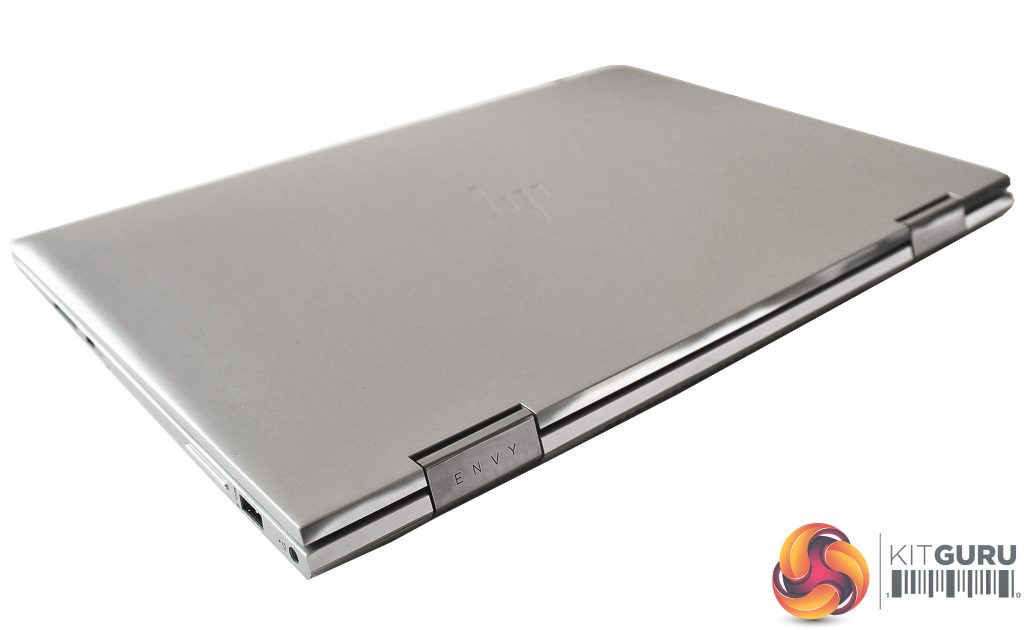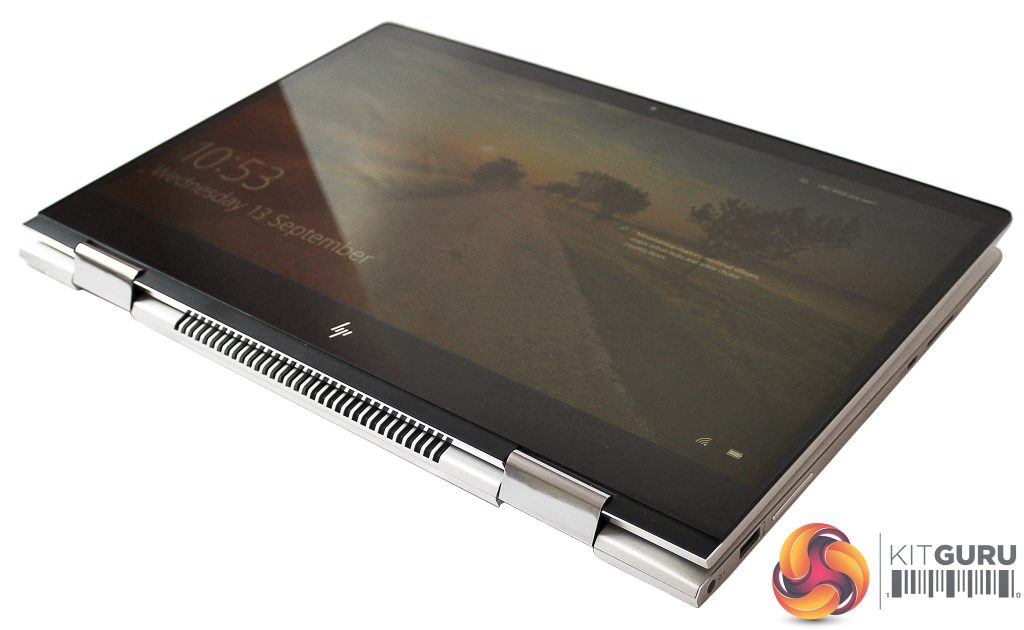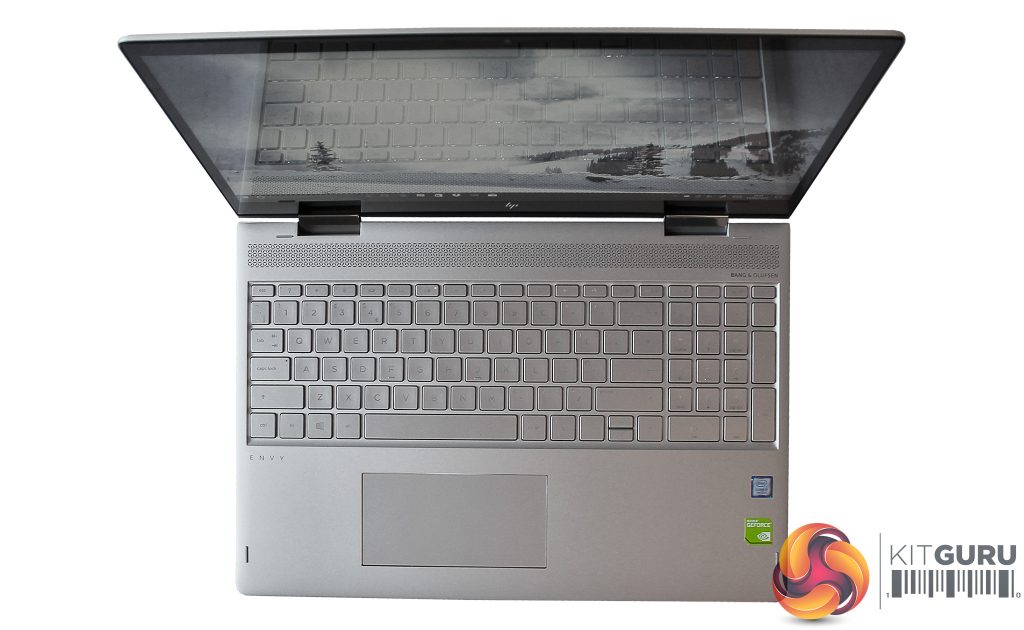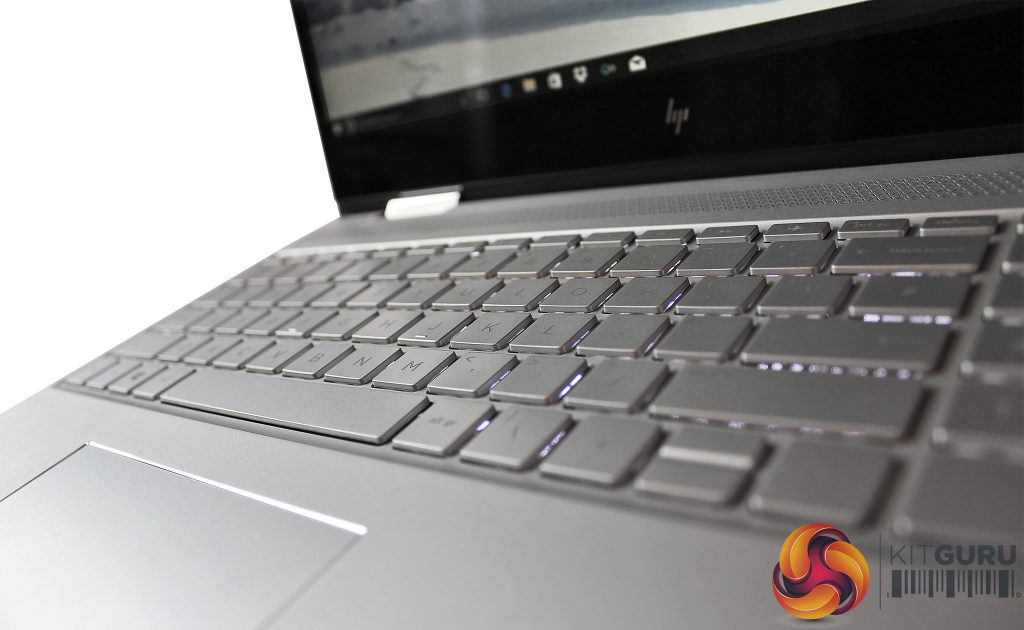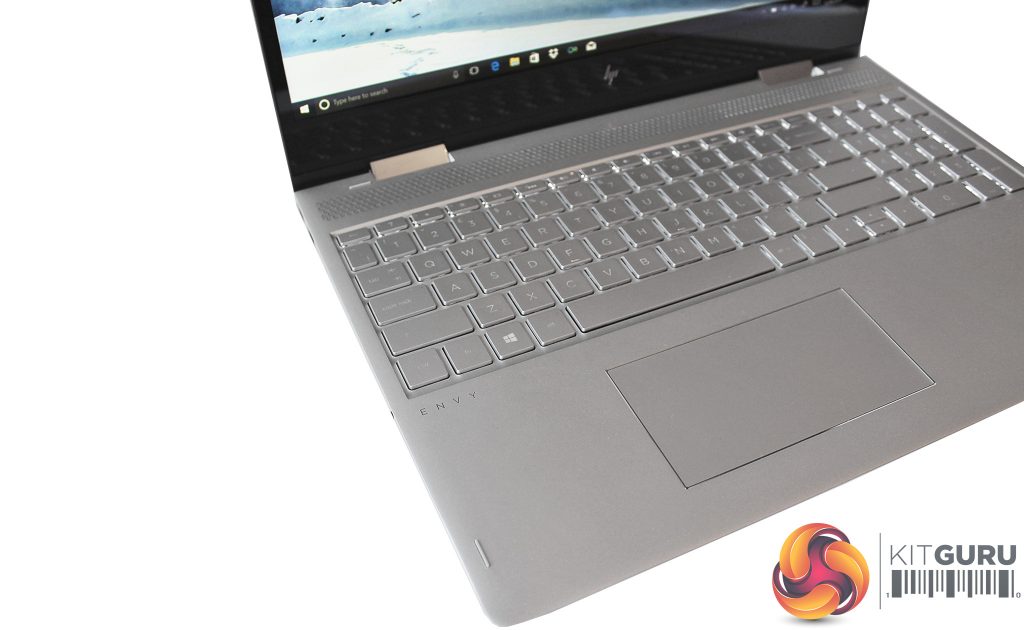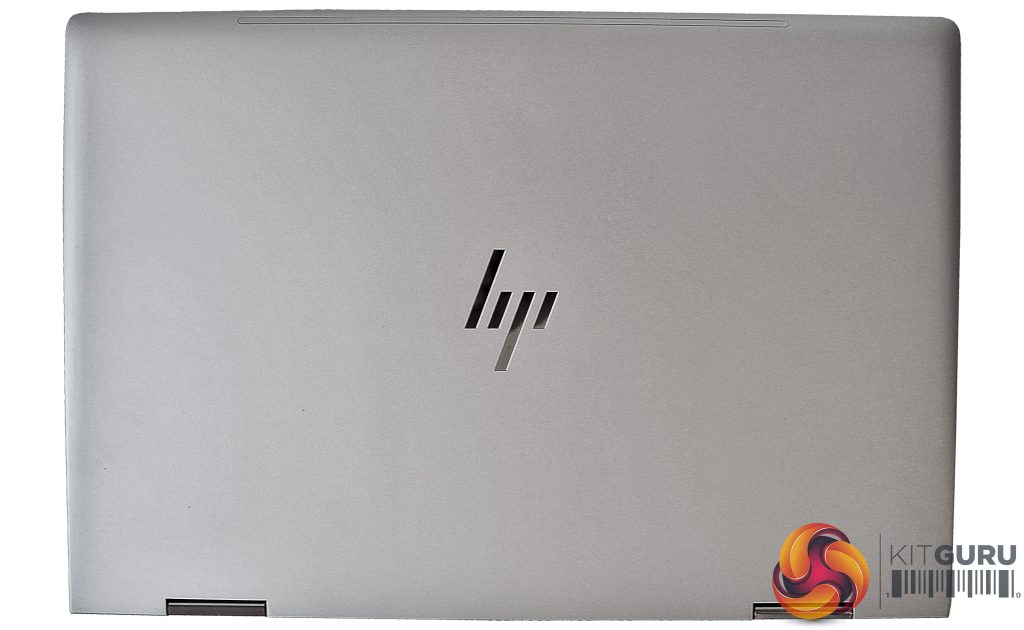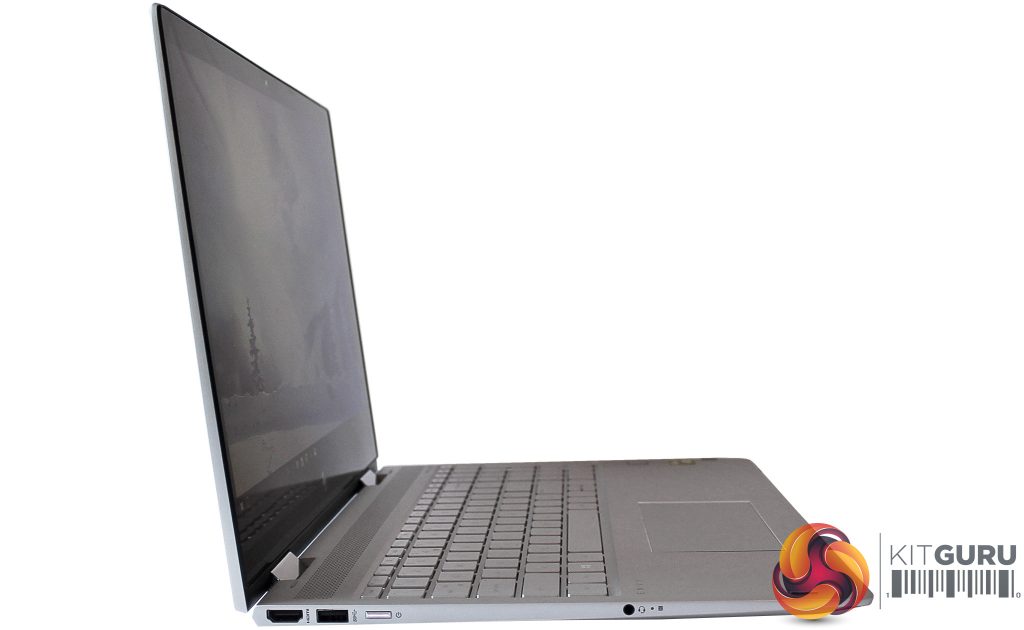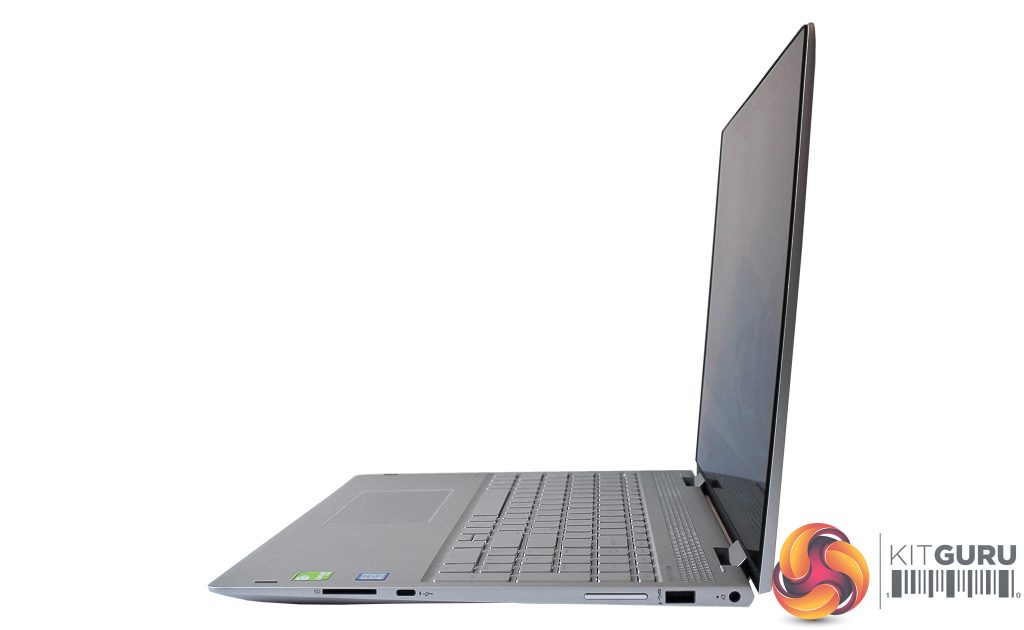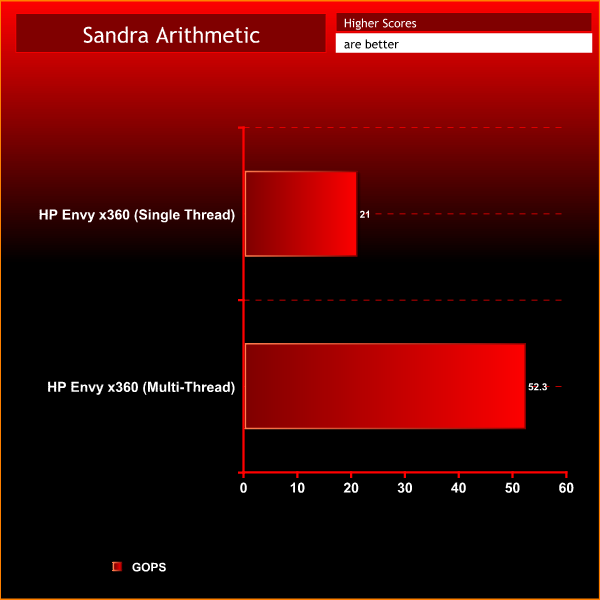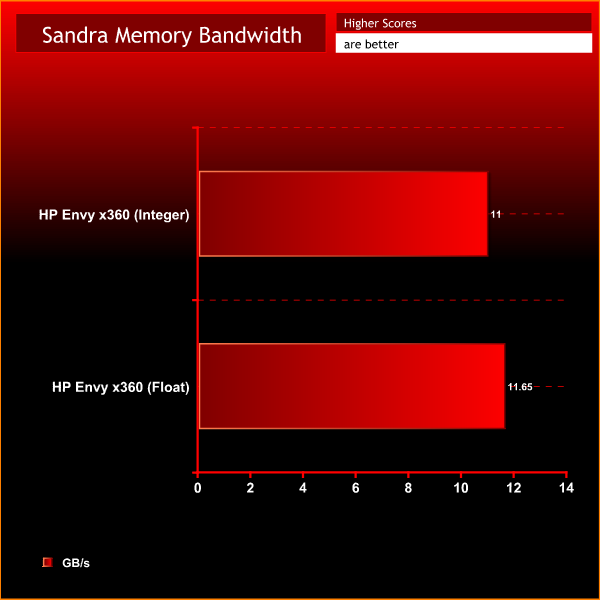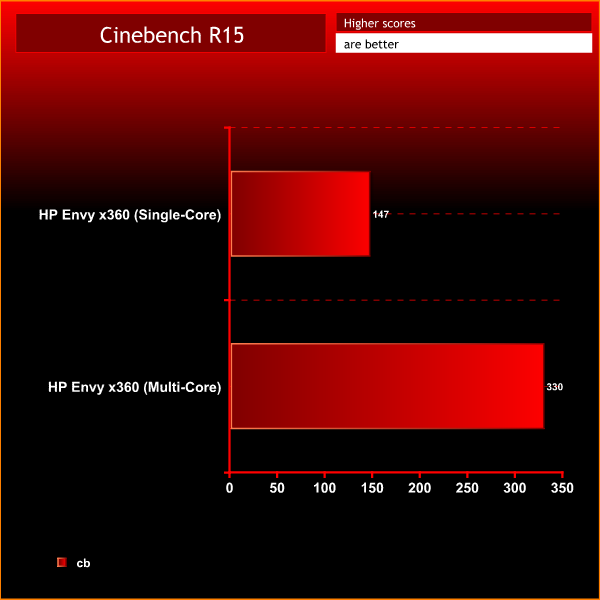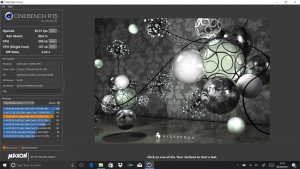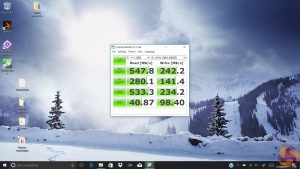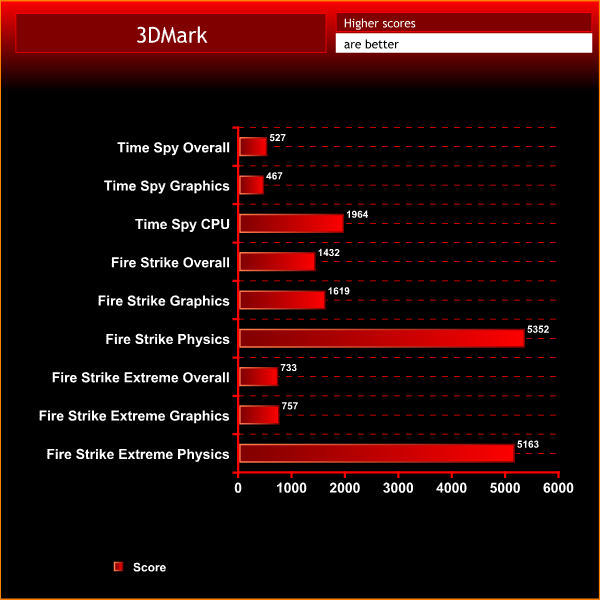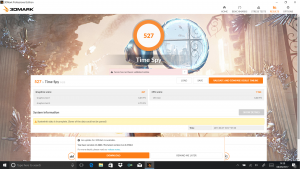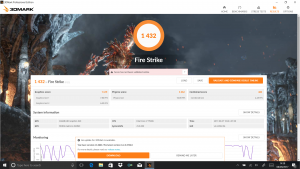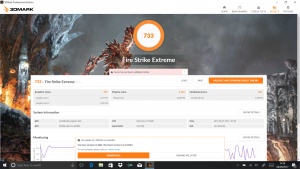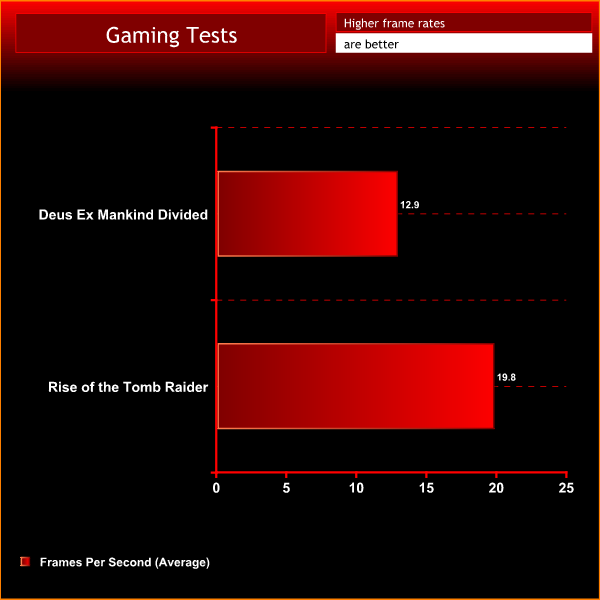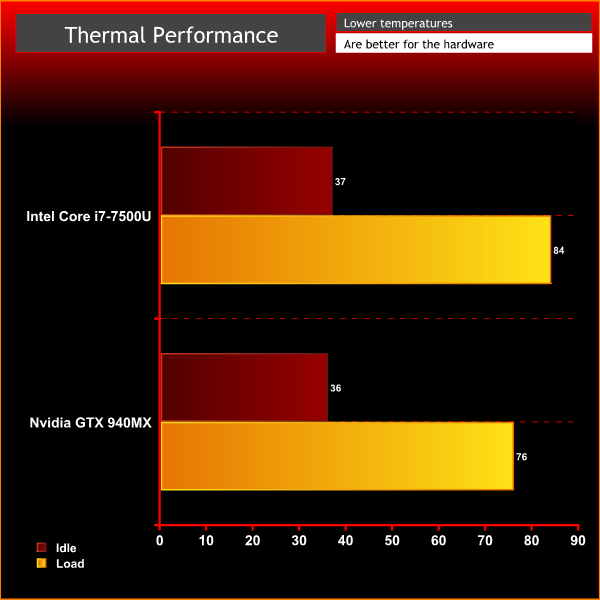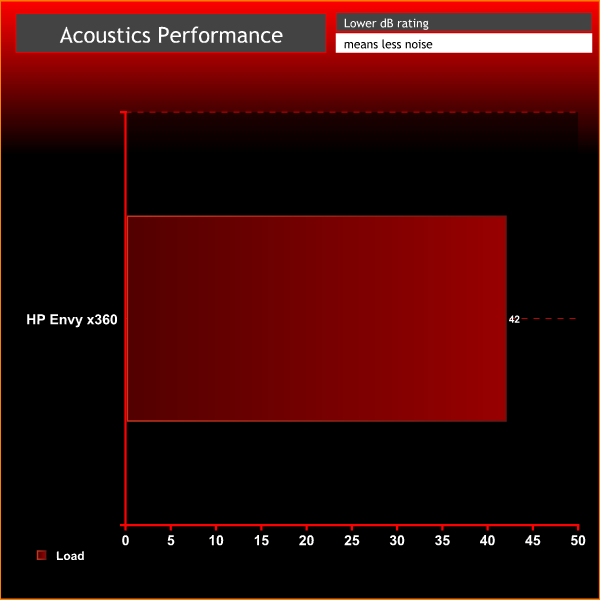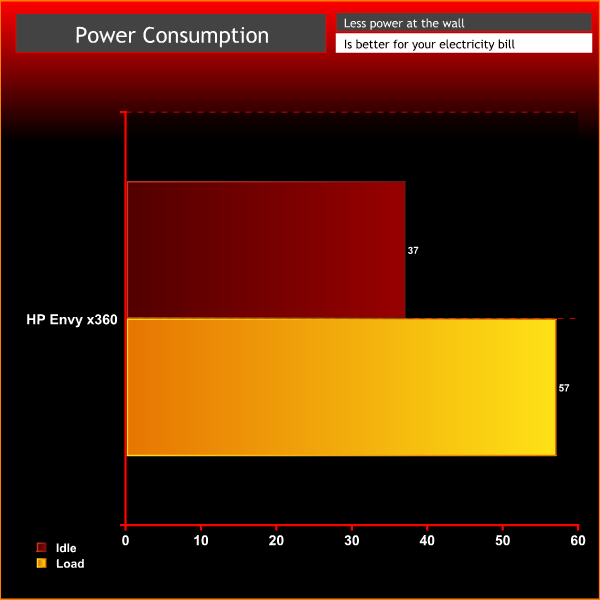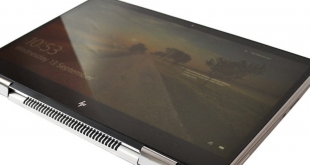
The latest laptop from HP is a high-quality unit that’s taking aim at creative types, media fans and home users – anyone really, who wants a versatile convertible machine that pairs power with style. As its name suggests, the HP Envy x360 has a hinge that spins its touchscreen through 360 degrees, so it can be used as a laptop or a tablet. The touchscreen comes with a stylus, so HP says it’s perfect for creative professionals who need to create detailed, accurate drawings.
The 15.6 inch design means there’s plenty of screen real estate, and HP hasn’t tried to make this machine impossibly slim and light – so it functions well as a laptop, too.
The HP Envy x360 costs £1,149, which plants it firmly in the middle of the notebook market – can it succeed against strong and versatile competition?
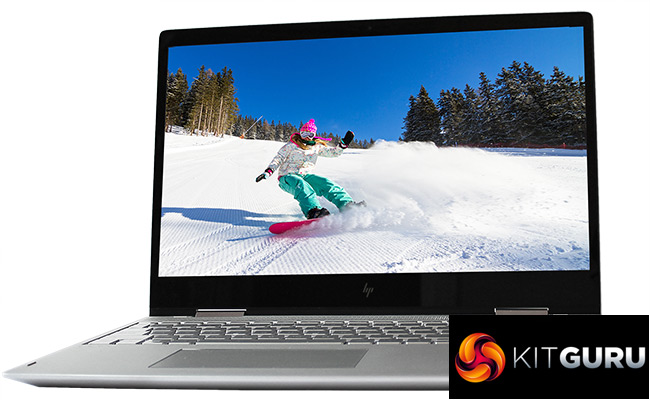
Specifications:
- OS: Windows 10 Home 64-bit
- CPU: Intel core i7 7500U (2.7Ghz – 3.5Ghz)
- Display: 15.6” Full HD, IPS LCD in LED backlight 1920×1080 16:9
- Memory Supplied: 1 x 8GB
- Memory Type: DDR4
- Memory Speed: 2133
- Max Memory Support: 32GB
- Graphics Chipset: nVidia GeForce GTX 940MX
- Graphics Memory: 4GB GDDR5
- Storage: 128GB M.2 SSD + 1TB 7200RPM
- Keyboard Type: Chiclet
- 1 Ports: 3
- HDMI Port(s): 1
- Microphone/headphone Jack(s): 1
- Card Reader: SD (XC/HC)
- Audio: – 2.1 sound by Bang & Olufsen
- Wireless LAN – Intel 2×2 802.11ac
- Bluetooth: V4.2
- Webcam: Full HD type (30fps@1080p)
- Warranty: 1 YR’s Collect & Return (1 YR Global)
Total cost £1,149 inc vat.
There isn’t much to shout about when it comes to HP’s packaging. The Envy arrives in a standard looking box, with the only hint of special design the gleaming logo in the bottom-right corner.
On the inside, it’s packaged between slabs of dark foam, with the power pack and stylus sequestered in a small box on one side of the laptop.
Get beyond the box, though, and it quickly becomes clear that HP’s latest laptop is a good-looking bit of kit. The lid is decorated with a shining HP logo, the hinges are finished in the same chrome-effect metal, and the entire machine is made from smart-looking aluminium.
The same metal is used around the keyboard, and the screen has no visible break between the screen and its bezel. The wide trackpad has smart bezelled edges, and the speaker grille uses a stunning triangular pattern hewn straight out of the metal.
The wrist-rest features the Envy logo, and it’s hard to disagree with that sentiment.
The HP is no less impressive when you get hands-on. It’s extremely well-balanced, which means it’s possible to open the machine up with a single finger without the base lifting away from the desk, and the smooth hinges extend all the way around to the HP’s tablet position.
The metal used to build the base and screen feels rock-solid, so this is clearly a laptop that’ll survive being used on the road.
The HP weighs 2.16 kg and its body is just under 20mm thick. There are certainly slimmer and lighter laptops out there, but machines that cut down the size while maintaining this level of build quality tend to be far more expensive than the £1,149 HP system.
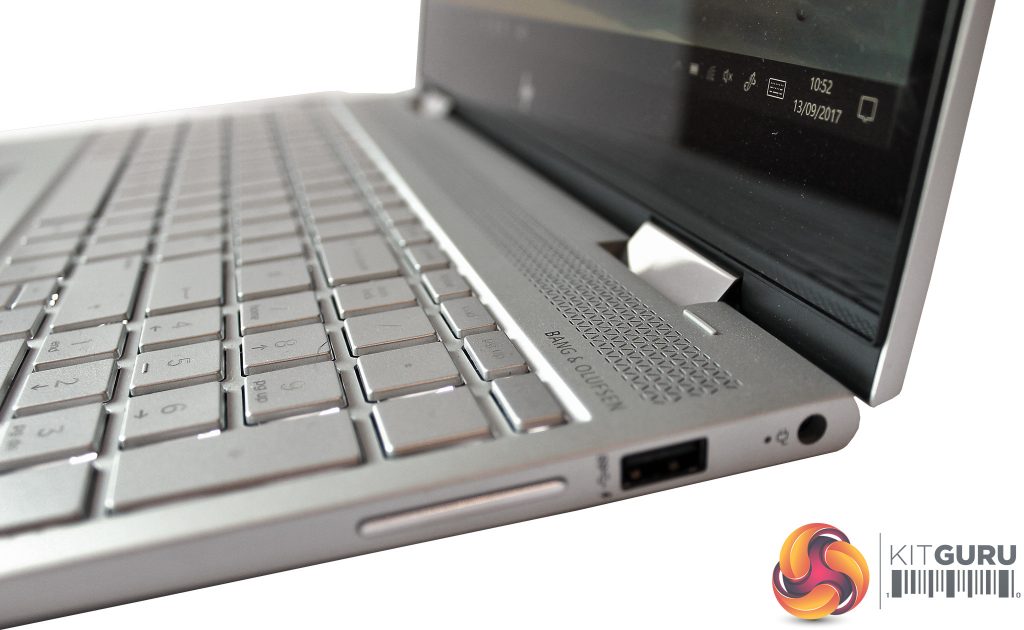
The HP’s left-hand edge serves up the power button, a USB port, the headphone jack and an HDMI output, while the right-hand side has another USB port, a USB 3.1 type-c connector, a card reader and a volume rocker.
That’s fine, but it’s worth noting that there isn’t a DisplayPort output, a third full-size USB port or an Ethernet socket. This laptop also doesn’t offer any internal access, but that’s a familiar price to pay for such svelte dimensions.The HP’s scrabble-tile keyboard shares its metallic colouring with the rest of the machine, and the buttons are well-spaced and wide. The keyboard has a white backlight and a numberpad, but we’re not keen on the single-height return key.
The typing experience is good. The keys hammer down with reasonable travel into a solid base, and they’re light, so it’s easy enough to type quickly for long periods.
The speedy, light keys are certainly comfortable, but they have a couple of minor issues that mean they can’t compete with the absolute best laptop units. The keys are a little too wobbly, for starters – better devices have buttons with a little more rigidity. We’d also prefer a tiny bit more weight to each button.
These are minor quibbles, though, and they’re not going to get in the way of serious productivity. And, while this keyboard might not be as good as the best laptop offerings, it’s still good – and still better than most other convertible machines.
HP’s wide trackpad is fine, with a smooth surface and two integrated buttons that are snappy and responsive.
The 15.6in, 1080p screen is a glossy touchscreen unit that offers decent quality alongside impressive precision.
The contrast ratio of 1,394:1, for instance, is stunning. It’s formed from a brightness level of 223cd/m2 and a black point of just 0.16cd/m2, and all of those figures bring important attributes to the fore: the high contrast means that colours will have good distinction and depth across the entire range, and the fantastic black level means those darker shades will really look inky.
The high brightness level, meanwhile, ensures that the HP will remain visible even under strong office lights.
Those are all good figures, but the HP’s colour reproduction is more middling. The temperature level of 6,203K is a tiny bit too warm, and the average Delta E measurement of 4.19 is very average. The panel can also only render 65% of the sRGB colour gamut.
That latter figure is the most damning when it comes to colours, and it precludes the HP from the most high-end, colour-sensitive work – for that kind of ability you’ll need to fork out a lot more for a laptop or a monitor that can properly display the entire sRGB or Adobe RGB gamut.
For most users and most creatives who need a stylus-driven working environment, though, the HP’s screen is amply good enough: the great contrast delivers bright highs and inky lows, and the 1080p resolution means it’s sharp enough to produce fine detail.
Those colours aren’t bad, either – once again, this is an area where the HP is merely good, rather than great.
And, finally, there are the speakers. The audio kit here comes from Bang & Olufsen, and it’s decent – the two speakers produce clear voice frequencies and high-end sounds that are punchy without being tinny. The mid-range is good, too, although the lack of a subwoofer means that bass is weak.The HP is driven by a Core i7-7500U, which is one of Intel’s more capable low-power processors. Its clock speed of 2.7GHz is solid, and it’ll reach a peak of 3.5GHz with Turbo Boost. That’s good enough for single-threaded tasks, but this chip only has two cores – rather than the four that are included with full-fat Core i7 chips. That means multi-tasking will suffer.
It’s paired with 8GB of memory and a 128GB Samsung SSD. They’re both fine, but they both leave us feeling a little underwhelmed: the memory is single- rather than dual-channel, which will reduce its performance, and the SSD is a SATA model rather than an NVMe unit – so that will be slower, too.
The processor sits alongside an Nvidia GeForce 940MX graphics core. It’s an obscure, updated version of the original 940M, which was a chip from mid 2015 – so that means it uses the older Maxwell architecture, rather than the stunning Pascal design that’s found in most current laptops.
Nvidia’s slight upgrade means the 940MX has been given a clock speed boost and it now runs at 1,004MHz with a Boost peak of 1,242MHz, and it has 4GB of dedicated memory. That’s solid, but it’s only slower DDR3 memory – there’s a version of the 940MX that uses quicker GDDR5, but HP hasn’t used that here.
The 940MX is certainly better than an integrated chipset, but this GPU isn’t powerful enough to run modern, top-tier games at high levels of quality. Instead, it’s designed for graphical applications – the creative tools that people will use on the Envy.
Connectivity, meanwhile, is entirely ordinary. There’s dual-band 802.11ac wireless and Bluetooth, but no Ethernet on the device and no adapter in the box.
HP, meanwhile, is selling two other versions of this machine. The £999 15-bp004na version has a weaker Core i5 processor. The 15-bq002na, meanwhile, costs just £749 but makes do with an AMD A9-9420 APU with integrated graphics. On the plus side, that model has a larger SSD.
HP has loaded this machine up with a standard selection of software – which means fine basic options, but little in the way of extras. There are numerous HP tools for managing the stylus, creating recovery media and printing, but elsewhere you’ll just be navigating your way around trials for Netflix, Minecraft, McAfee LiveSafe and a couple of games.
To test the HP Envy x360, we have pushed it through our standard array of benchmarks and tests. We have tested CPU performance, GPU performance, drive performance, thermals, power usage and battery life to give a comprehensive view of the laptop.
Here are the benchmarks you can expect to find in this review:
- SiSoftware Sandra
- Cinebench R15
- CrystalDiskMark
- 3DMark Fire Strike
- 3DMark Fire Strike Extreme
- 3DMark Time Spy
Given that this laptop does have a discrete GPU inside, we also tried some 1080p gaming at low settings on:
- Deus Ex Mankind Divided
- Rise of the Tomb Raider
SiSoftware Sandra (the System ANalyser, Diagnostic and Reporting Assistant) is an information & diagnostic utility. It should provide most of the information (including undocumented) you need to know about your hardware, software and other devices whether hardware or software.
Sandra is a (girls’) name of Greek origin that means “defender”, “helper of mankind”. We think that’s quite fitting.
It works along the lines of other Windows utilities, however it tries to go beyond them and show you more of what’s really going on. Giving the user the ability to draw comparisons at both a high and low-level. You can get information about the CPU, chipset, video adapter, ports, printers, sound card, memory, network, Windows internals, AGP, PCI, PCI-X, PCIe (PCI Express), database, USB, USB2, 1394/Firewire, etc.
CINEBENCH R15 is a cross-platform testing suite that measures hardware performance and is the de facto standard benchmarking tool for leading companies and trade journals for conducting real-world hardware performance tests. With the new Release 15, systems with up to 256 threads can be tested.
CINEBENCH is available for both Windows and OS X and is used by almost all hardware manufacturers and trade journals for comparing CPUs and graphics cards.
The dual-core, Hyper-Threaded and low-power processor is a solid piece of silicon. Its Cinebench score of 330cb is decent for a slim machine like this, and we never noticed any sort of delay when navigating the HP for our various tests. It’s got enough power for general-purpose computing, Office applications and the sort of creative tools that will use the Envy’s stylus.
The chip does suffer due to its low-power design, though. There’s not enough power here for the most demanding work software, and the dual-core design means the CPU’s single-core score is about half the speed of the multi-core result. A proper quad-core chip would deliver a bigger gap between those two results.
Here we test the HP Envy x360's storage performance, using CrystalDiskMark 5.1.1.
SSD Performance
The SSD here is quite mid range. Samsung’s drive uses the slower SATA protocol, so its CrystalDiskMark read and write scores are about four times behind the best NVMe hardware. That’s still quick, and still quicker than any hard disk, but other machines will offer more storage speed.3DMark is an essential tool used by millions of gamers, hundreds of hardware review sites and many of the world’s leading manufacturers to measure PC gaming performance. Futuremark say “Use it to test your PC’s limits and measure the impact of overclocking and tweaking your system. Search our massive results database and see how your PC compares or just admire the graphics and wonder why all PC games don’t look this good. To get more out of your PC, put 3DMark in your PC.”
For this test, we ran the HP Envy x360 through Time Spy, Fire Strike and Fire Strike Extreme. We have listed results for the overall score, the CPU only score, the GPU only score and physics.
The HP Envy x360 does come with a discrete graphics chip in the form of Nvidia's GTX 940MX. With that in mind, it stands to reason that some buyers may want to play a game or two at some point. For our tests today, we have ran Deus Ex: Mankind Divided and Rise of the Tomb Raider on this laptop. We used 1080p resolution both times and resorted to low graphics settings while running each game's in-built benchmark.
The older, low-end graphics core inside the HP means that it’s no good as a gaming laptop. It couldn’t handle Deus Ex or Rise of the Tomb Raider at any level of quality when we ran those titles at 1080p – to get modern games running remotely smoothly you’ll need to drastically drop the resolution.
There is definitely enough power here to handle graphical applications, though – if you’re using the stylus to get design work done, then this machine won’t slow you down.
There’s enough power here for media, too, so you’re fine if you want to indulge in some movies after work. Unfortunately, gaming seems to be a no-go.
Thermal dynamics
To measure idle temperatures, a reading was taken after having Windows open on the desktop for 30 minutes. A reading under load was taken with Prime 95’s SmallFFt test running alongside 3DMark Fire Strike.
The HP never gave us thermal issues, either: the CPU peaked at a reasonable temperature of 84°C during a stress-test, and the system was never loud.
Acoustics
Acoustically, this laptop is far from being loud. At idle, we couldn't detect any sound coming from it at all. At load, the system didn't reach annoying noise levels. For ‘idle’ power draw, a reading was taken after having Windows open on the desktop for 30 minutes. A reading under load was taken while running Rise of the Tomb Raider to stress the hardware.
Power consumption is low, peaking at less than 60 watts in all.
Battery Life:
There isn’t anything special about the HP’s battery life. The Envy is powered by a 3-cell battery with 55.8Wh of power – a figure that isn’t particularly large. It lasted for four hours and seventeen minutes in our PC Mark 8 test, which is enough to get some work done – and with careful power management you’ll likely get this machine to last until lunchtime. Sadly, though, it’s just not capable of a full day away from the mains.
HP’s latest machine is a good convertible laptop, but it rarely ascends beyond that level.
Build quality and design, for instance, are impressive – the Envy looks the part and feels sturdy – but other laptops are certainly slimmer and lighter. And the keyboard, while good for typing, is a bit too wobbly to challenge the best notebooks.

The screen has very good contrast but its work potential is hampered by weaker colour accuracy, and battery life is middling.
The low-power processor, meanwhile, is fine for general purpose work tasks, and the graphics chip can handle those sorts of applications too – but anything beyond this kind of software will prove too much for the dual-core Intel silicon.
HP’s system is good rather than great, then, but that’s fine – especially at this price. It’s a tempting and impressive bit of kit if you need a versatile and good-looking system for work, general computing and media.
The model we’ve reviewed here is available from Tesco for £1,149.
Pros:
- Good-looking and sturdy design
- Hinged touchscreen works well with stylus
- Screen has impressive contrast
- Keyboard and touchpad are both solid
- Core i5 processor has the power for general computing
Cons:
- Low-power processor has its limitations
- Battery is middling
- Screen doesn’t have great colour accuracy
Kitguru says: HP’s machine is a solid bit of kit, from its sturdy and good-looking design right through to the keyboard and trackpad, but it’s never able to truly impress: the screen’s good contrast is undermined by poorer colours, the keyboard is a tad wobbly, and the low-power processor quickly finds its limits. However, it’s not too expensive, so it’s a solid option if you’re after a versatile work notebook without breaking the bank.

Be sure to check out our sponsors store EKWB here
 KitGuru KitGuru.net – Tech News | Hardware News | Hardware Reviews | IOS | Mobile | Gaming | Graphics Cards
KitGuru KitGuru.net – Tech News | Hardware News | Hardware Reviews | IOS | Mobile | Gaming | Graphics Cards


